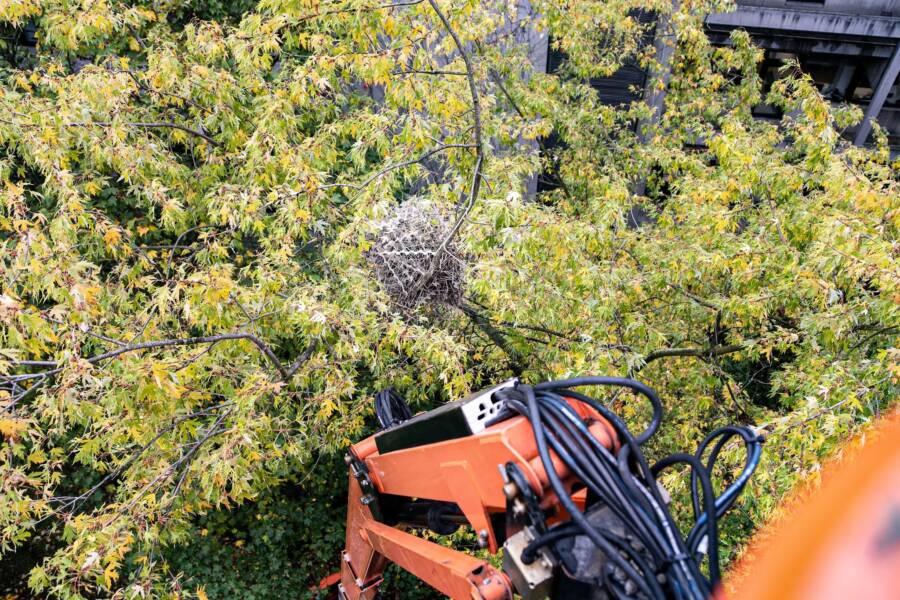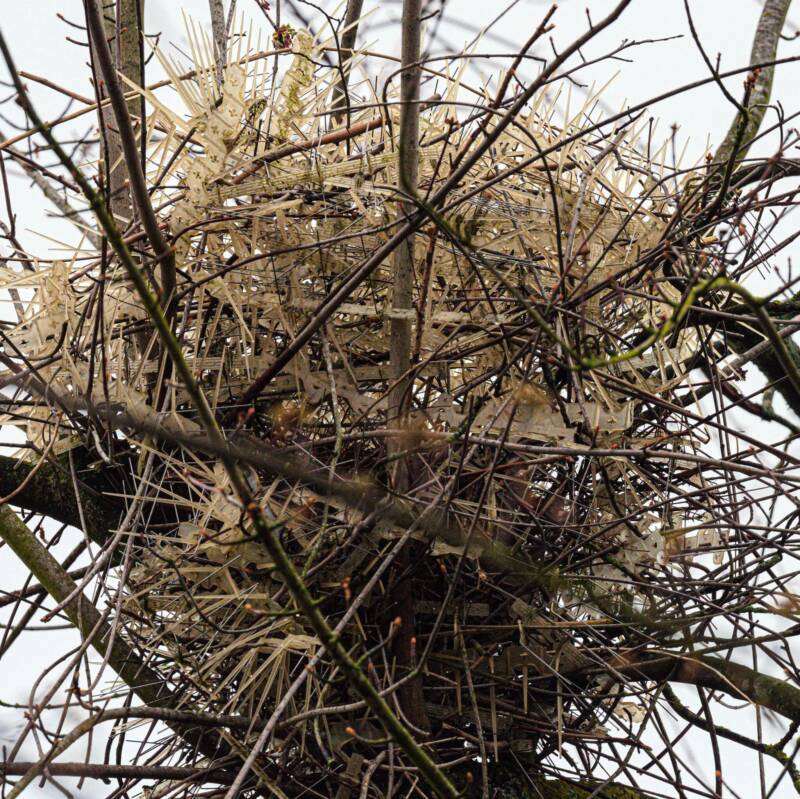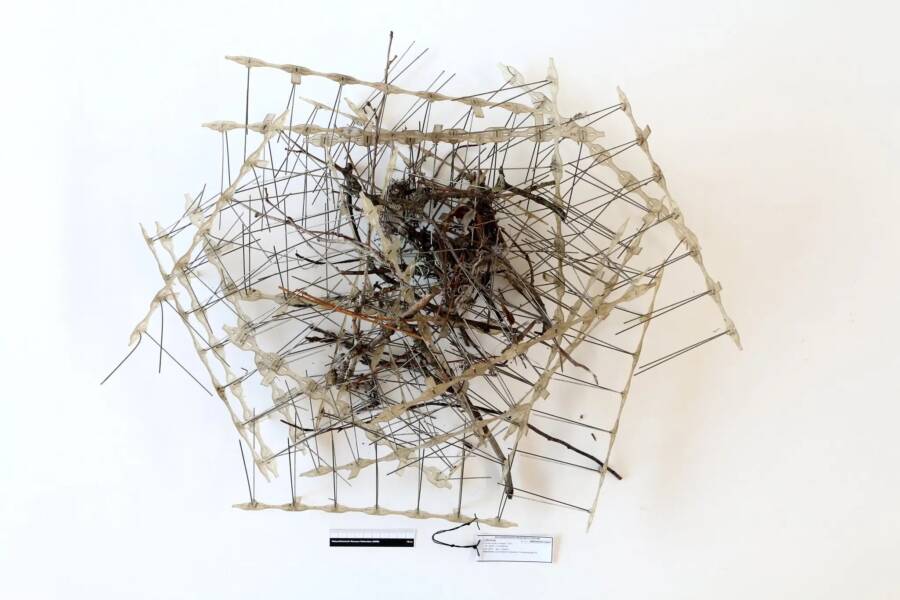
Agricultural restoration of silvaculture will also greatly expand bird populations. Every farmboy knows what it is like to be followed by a large flock of birds behind his cultivating gear. That will be our future once we start planting treelines wide enough to allow equipment to properly pass between.
This will be future important when our cities naturally disperse as well into the countryside. .



Researchers In Europe Discover That Birds Have Been Using Anti-Bird Spikes To Make Nests
By Kaleena Fraga | Edited By Maggie Donahue
Published July 18, 2023
https://allthatsinteresting.com/anti-bird-spike-nests?
Researchers documented magpies and crows using the anti-bird spikes to build nests, demonstrating how birds have adapted to urban environments.
Max CrawfordA magpie nest in Scotland that utilized bird spikes on top of the nest.
Urban birds have long used urban objects to make their nests. In recent years, researchers have found things like condoms and cigarettes threaded between sticks and moss. But they were recently surprised to find that birds had started using another object in their nests — anti-bird spikes, which are supposed to deter birds from roosting on buildings.
“I really thought I’d seen it all,” Kees Moeliker, director of the Natural History Museum Rotterdam and one of the authors of a new study on the anti-bird spike bird nests, remarked to The Guardian. “I didn’t expect this. These anti-bird spikes are meant to deter birds, they are supposed to scare them off, but on the contrary, the birds just utilise them.”
According to The New York Times, this nest-building trend was first noticed by Auke-Florian Hiemstra, a biologist who studies how animals use human materials. In July 2021, Hiemstra noticed a Eurasian magpie nest studded with hundreds of anti-bird spikes in Antwerp, Belgium.

Auke-Florian HiemstraHiemstra described this magpie nest in Belgium, studded with anti-bird spikes, as a “bunker for birds.”
“[W]e also describe it in the paper as the biggest nest we found, a nest that included more than 1,500 nasty, metal, anti-bird spikes,” Hiemstra told NPR. “Fifteen hundred — so that’s like a bunker for birds.”
As Hiemstra explained to NPR, magpies build a “nest bowl” with a roof. Usually, they collect thorns for the nest’s roof in order to ward off predators. The magpies in Antwerp, however, turned to the anti-bird spikes instead, apparently ripping them from the side of a nearby building. The spikes are turned outward, while the inside of the nest is soft and warm for the chicks.
“And this is, I think, crazy,” Hiemstra said to NPR. “They use the bird spikes in the same way as they were intended to be used, namely to ward off other birds… And I think that’s just perfect.”
When researcher started looking for other examples, they found them. Both magpies and crows, intelligent birds that are members of the corvid family, were documented using anti-bird spikes to build their nests in Rotterdam, Glasgow, and the Dutch city of Enschede.

Wijnand KoekoekA magpie nest with anti-bird spikes in Enschede, Netherlands.
Though birds using anti-bird spikes to build their nests is new, it’s hardly the first time that researchers have documented birds using urban objects for nest-building. As The Guardian reports, a South African museum found a crow’s nest in 1933 that used materials like copper, galvanized iron, and barbed wire. In recent years, Hiemstra has found birds nests packed with windshield wipers, sunglasses, plastic carnations, and bags used for cocaine.
“Almost anything can become part of a bird nest,” Hiemstra told The New York Times.

Kees MoelikerA crow’s nest using anti-bird spikes that the researchers found in Rotterdam. Here, the crows used the spikes to add structural stability to their nests.
As The New York Times notes, the consequences of birds using anti-bird spikes are unknown. Other urban objects, like cigarettes, have proven to be a double-edged sword for birds. The chemicals in cigarettes can protect them from parasites, but can also be toxic. Likewise, the shiny anti-bird spikes could end up attracting mates or attracting predators.
But Hiemstra and the other researchers are mostly content to see that birds have adapted so well to their urban environments.
“We should not deter birds, we should embrace birds and live together with them,” Moeliker told The Guardian. “These birds are very smart and they always find ways to cope with the harsh urban life. I’m very sympathetic towards these crows and magpies. They are my heroes.”
Hiemstra seconded him, telling NPR: “[The nest phenomenon] really reflects how animals now are adapting to our urban city life… I think it’s magnificent to see these rebellious birds actually fighting back.”
No comments:
Post a Comment